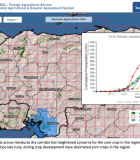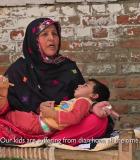Balochistan Agriculture Project (BAP)
BAP is the third phase of a 10-year agricultural development project that evolved through a pilot phase focused on community development and food security, to a second phase focused on increasing surpluses and connecting farmers to markets, to a third phase that emphasized transitioning beneficiary farmers to commercially oriented business enterprises. To implement this strategy, the project focused on developing community organizations; introducing technologies and practices relevant to increasing crop and livestock productivity, including activities specifically designed to engage and benefit women; and developing value chains and markets.
Activity Description
To help communities increase the value of their products, the project provides technical assistance to: grade, package, and market products; connect farmers to better-paying markets; and improve buyer and supplier relationships. The project is also working to increase the participation of women in income-earning activities and is supporting the development of provincial agricultural policies and legal and regulatory frameworks for market-led and community-driven investments.
• Train more than 17,000 needy farmers in 800 communities to increase crop and livestock production as well as improve marketing.
• Promote effective and durable partnerships between public and private sector actors to ensure the sustainable impact of project interventions.
• Improve irrigation systems through rehabilitation of karez systems, land leveling, and pipe irrigation.
• Introduce new seed varieties and better production technologies with an emphasis on value addition and increased incomes.
• Increase livestock production through training in management practices, as well as provision of various production inputs such as feed supplements and de-worming medication on a cost-sharing basis.
• Arrange Eid livestock Mandis (markets) at the district level to help farmers improve their bargaining and profits.
• Link farmers' marketing collectives with local and national markets so farmers get a better value for their produce.
Expected Outcomes
• Improved economic performance of focus enterprises
• Improved skill development and job placement
• Increased use of modern technology and management practices
• Strengthened private sector and civil society engagement in policy-making
Actual Outcomes
• Average household income increased by 189 percent in nominal terms
• Women’s income increased by 100 percent in nominal terms and 15 percent in real terms
• The project generated $53.7 million in additional income for beneficiary households.
• The project generated $61.0 million in increased incomes for poor, rural households with a total outlay of $28.2 million (both expressed in 2015 dollars)—a net present value of $32.8 million and a return of $2.17 for every dollar spent.




